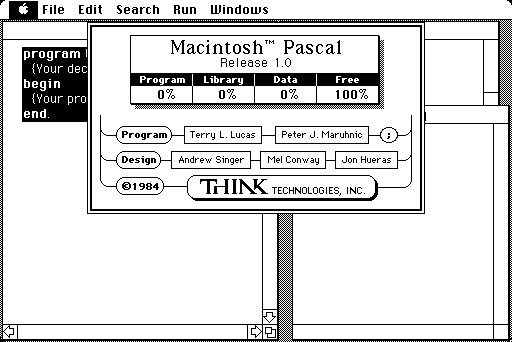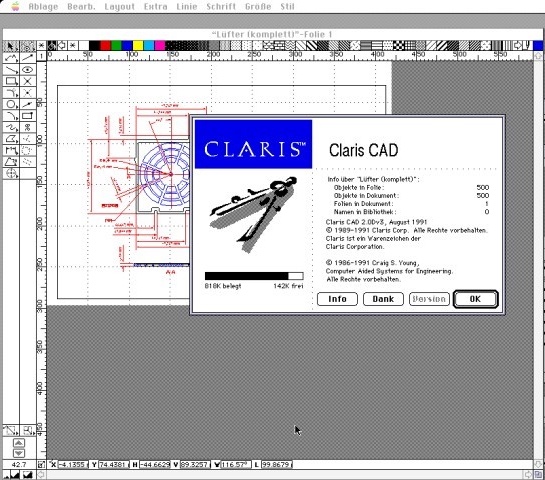My Mac 40th anniversary draft
January 23, 2024 at 9:01 PM by Dr. Drang
I assume that most of you have already listened—at least in part—to the latest episode of Upgrade, the 40th Anniversary of the Mac Draft. Any podcast with both John Gruber and John Siracusa is going be longer than your average Upgrade; I’m impressed they brought it in at 2½ hours. The whole show is good, but the Hall of Shame section is just hilarious.
I don’t have the sort of encyclopedic Mac knowledge the draft participants—Shelly Brisbin, Stephen Hackett, Dan Moren, Jason Snell, and the aforementioned Johns—have, but I do want to mention what my picks would be for two of the categories: first Mac and best/favorite Mac software.
My first Mac slips in between Siracusa’s original 128k Mac and Shelly’s Mac Plus.1 It was the 512k Mac, popularly known as the Fat Mac because it had so much memory. I bought it in early 1985, when I was was in grad school, and wrote my thesis on it. I took advantage of a discount through the University of Illinois, and added on an external diskette drive, an ImageWriter printer, and the cool canvas carrying bag, in which I hauled the Mac between my apartment and office—just like in Apple’s marketing literature of the time.
I tend to think of the Fat Mac as the first truly useable Mac, mainly because it had enough RAM for apps to have some breathing room. Even better, Switcher, which allowed you to run multiple apps at once before MultiFinder, gave the Fat Mac a giant advantage over the original. I was teaching a course in the spring semester of ’85 and made up my tests on the Mac, making the illustrations in MacPaint and then switching over instantly to paste them into a MacWrite document.
As for my best/favorite Mac software, I’m going to do the traditional podcast draft thing and talk about how I was torn between two apps, thus giving me effectively two picks. But before that, I need to point out that the choices made by those on the podcast are all objectively better than mine. I’m deliberately choosing apps that are weird but were very useful to me in the early years. They also showed off the Mac’s user interface to great advantage.
The app I nearly chose was Macintosh Pascal, written by THINK Technologies (who went on to publish Lightspeed Pascal and Lightspeed C, which had the greatest programmer slogan ever: “Make mistakes faster”) and distributed by Apple.

This was an interpreted Pascal, so the code ran relatively slowly, but the lack of a compilation step made the edit/debug/edit/debug cycle go quickly. On the editing side, Macintosh Pascal was my introduction to syntax highlighting, which you can see (sort of) in the screenshot above. This was the Mac’s font styles used to great effect. Debugging was also done visually by dragging a stop sign to the line of code that needed a breakpoint. These are things we take for granted now, but they were a revelation to me in 1985.
So with my not-quite-choice out of the way, here’s my fave: Claris CAD.

Am I kidding? No. This was a fantastic program for the kind of drawing I was doing back in the early ’90s and am still doing today. It wasn’t drafting, per se, but it did involve the kinds of construction typically done on a drafting table: lines tangent to circles, circles tangent to lines, lines perpendicular to other lines, and so on. The cursor would snap to features of the drawing and show a preview of how the next item would be drawn. It nearly always did exactly what I wanted.
And this is not just hazy nostalgia; I thought Claris CAD was an amazing program at the time. It was simply more in tune with the drawing of manufactured objects than were (and are) apps more obviously based on Bezier curves.
These apps were not only great, they are perfect for a draft. No one would snipe them.
-
I also had a Plus, but it was my second Mac and was bought for me by my employer. ↩

